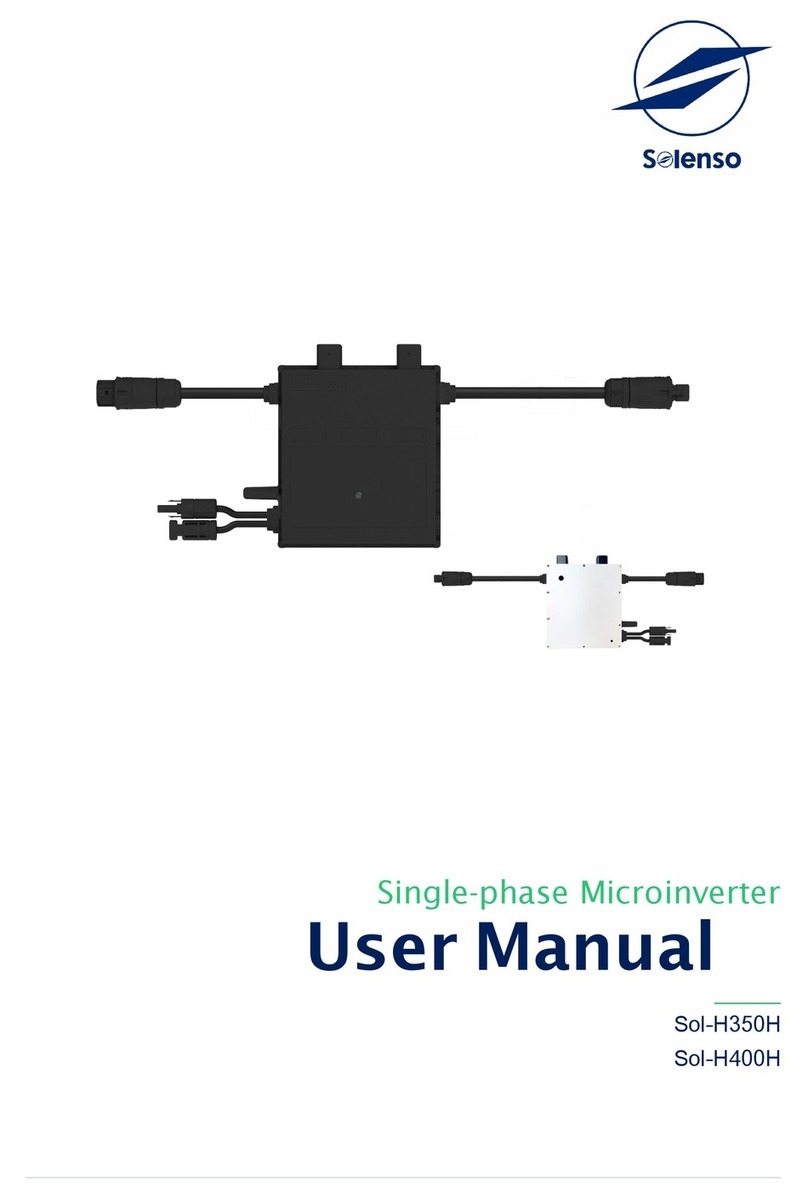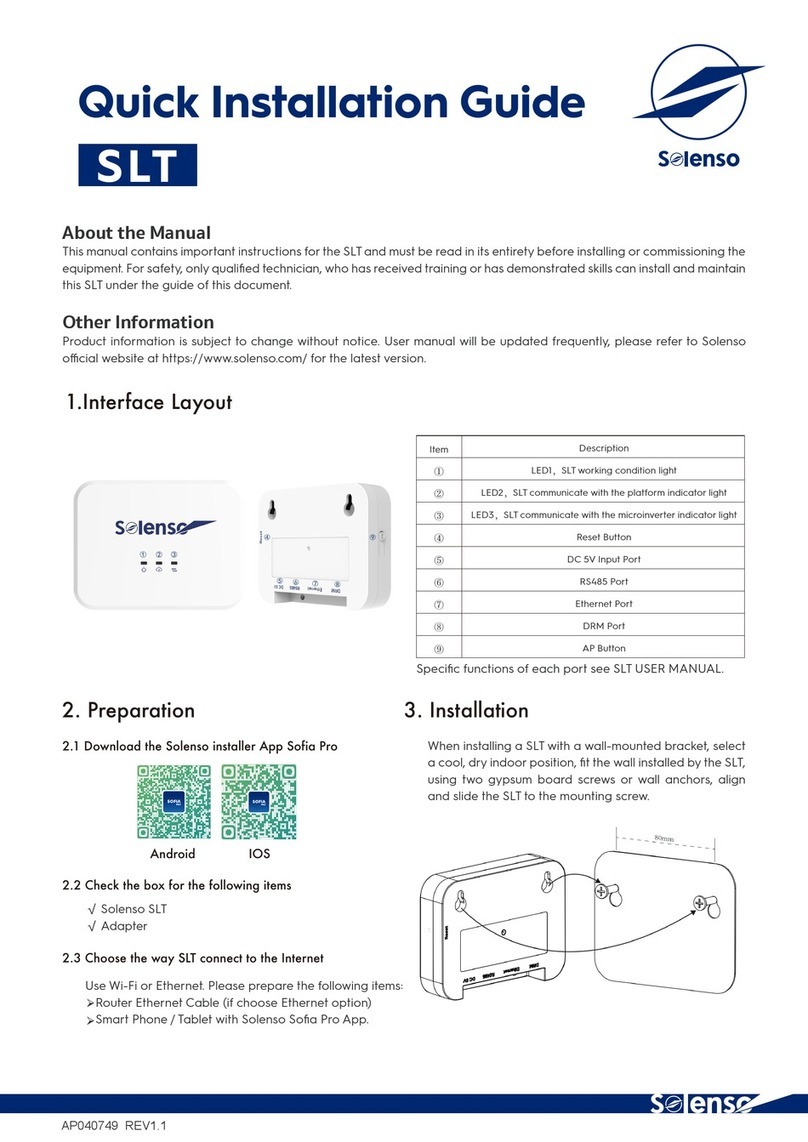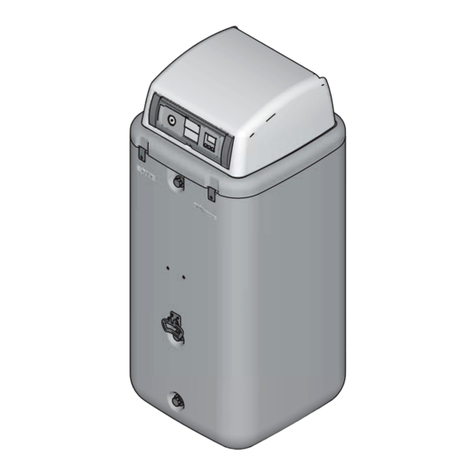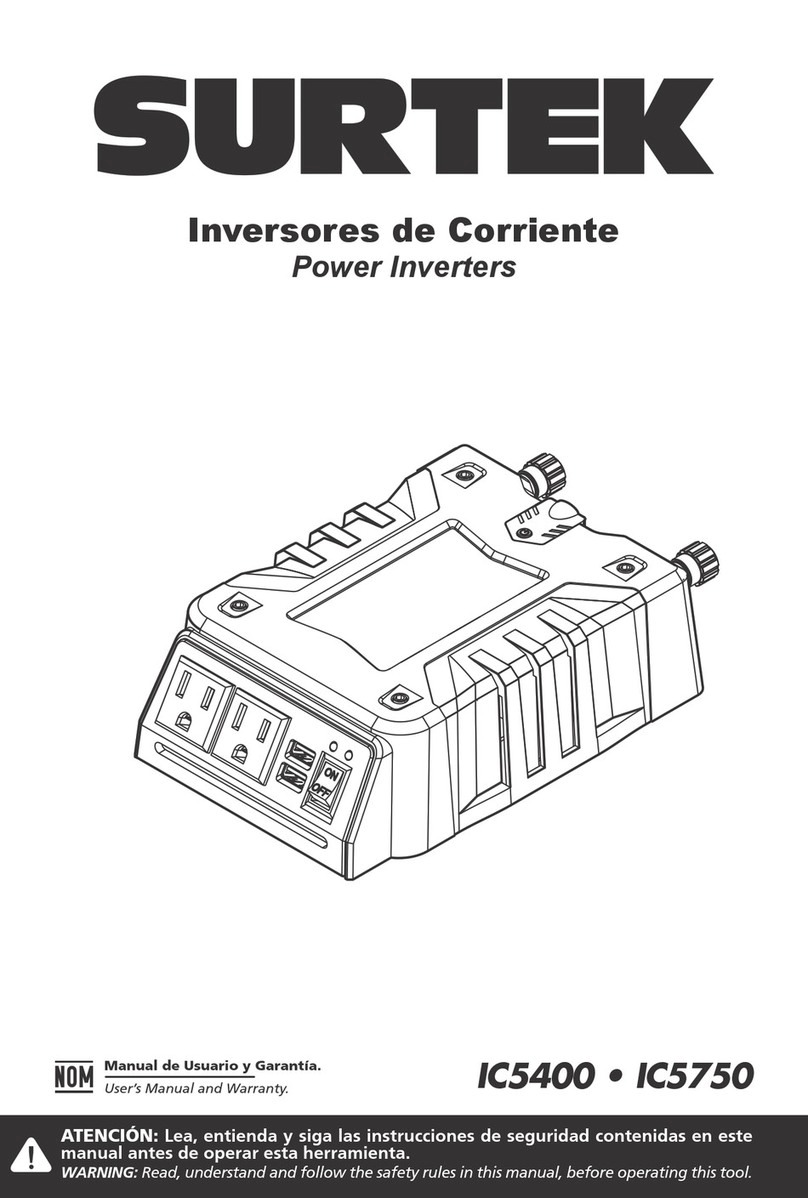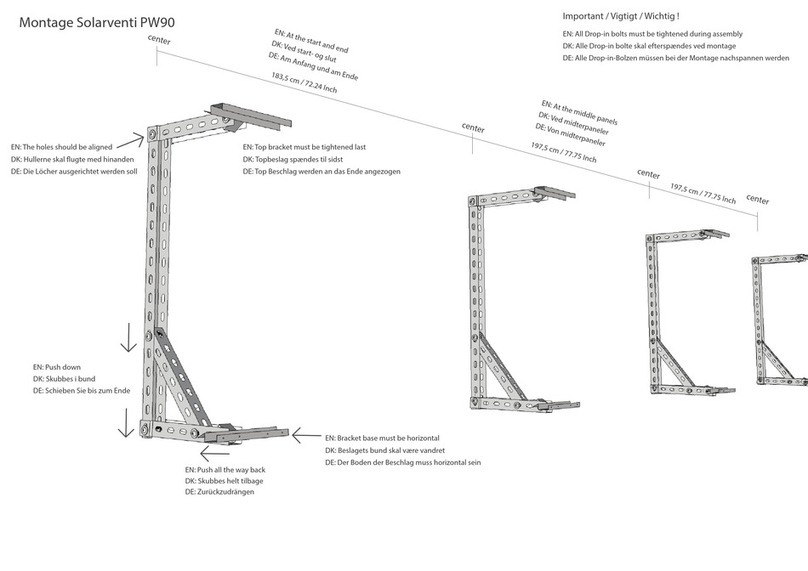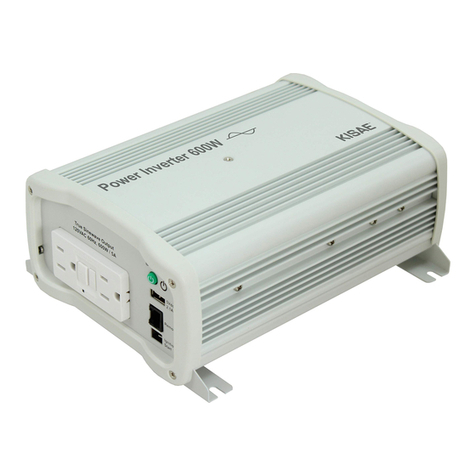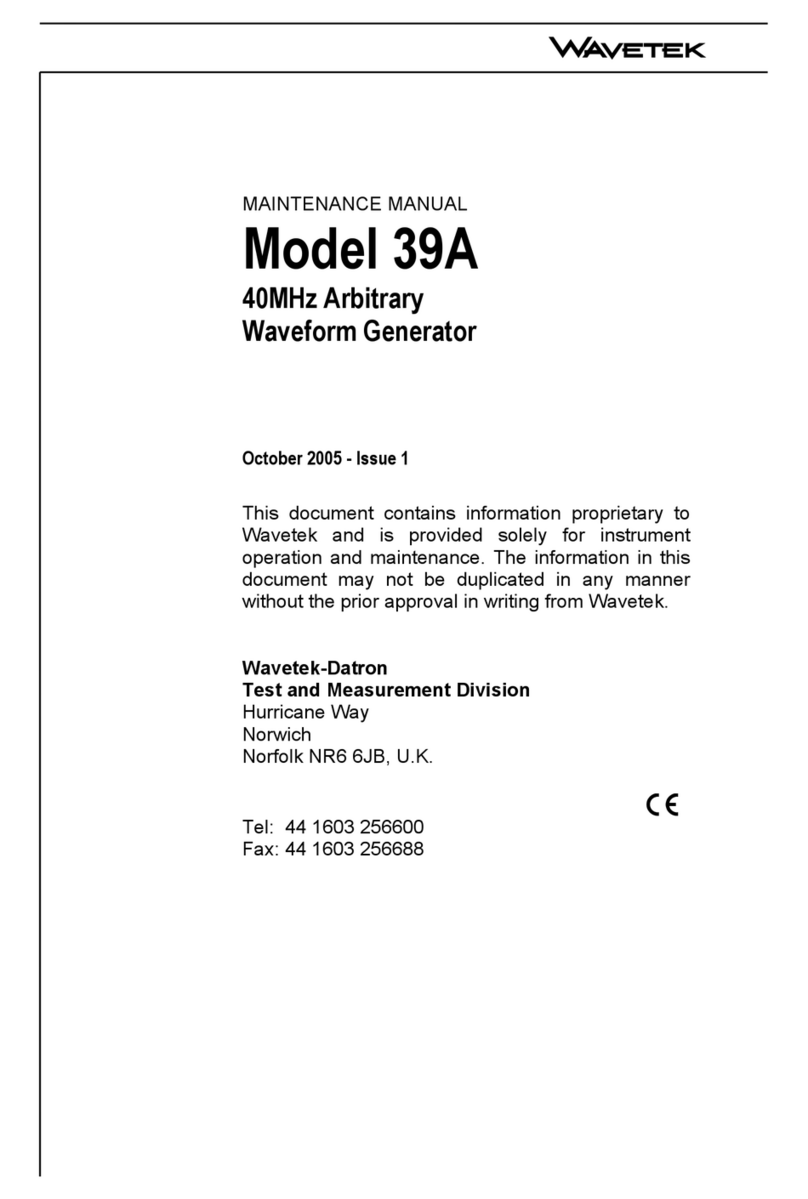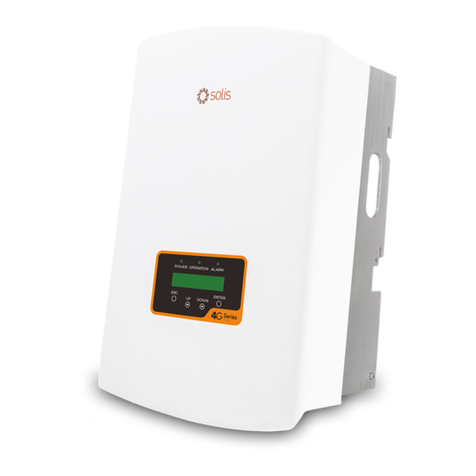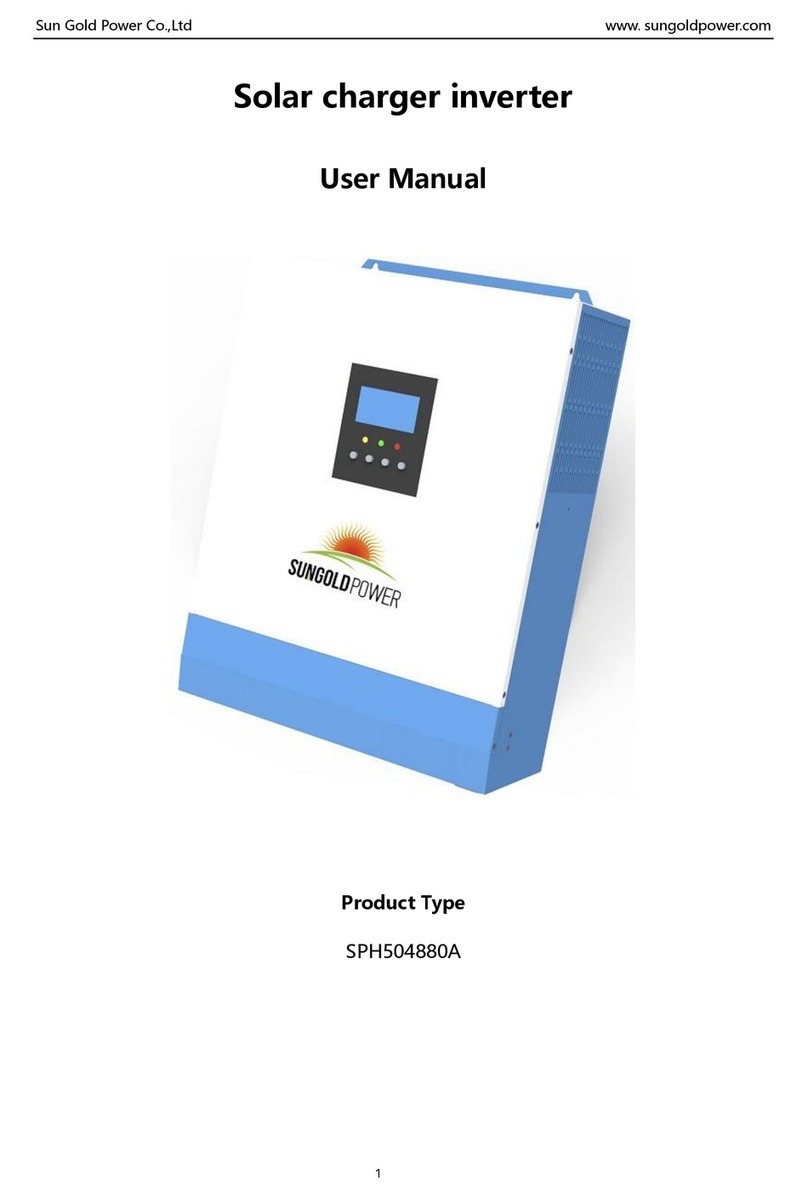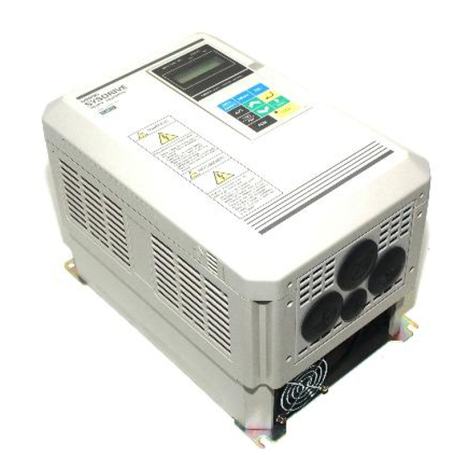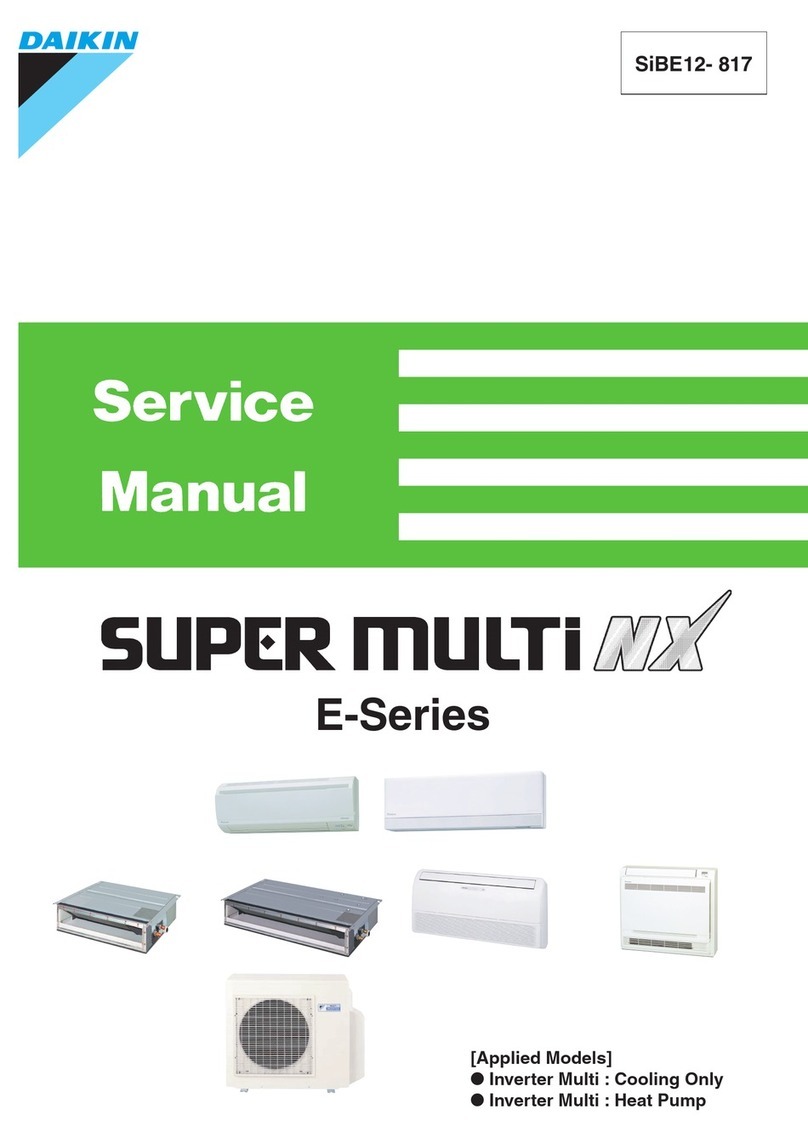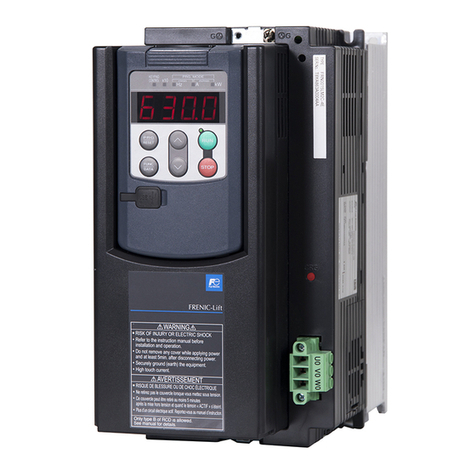Solenso Sol-H350 User manual

User Manual

2
About Microinverter
This system is composed of a group of Microinverters that convert direct current (DC) into alternating
current (AC) and feeds it into the public grid. The system is designed for the incorporation of one
Microinverter for two photovoltaic modules. Each Microinverter works independently that guarantees the
maximum power generation of each photovoltaic module. This setup enables user to control the production
of a single photovoltaic module directly, consequently improving the flexibility and reliability of the system.
About the Manual
This manual contains important instructions for the Sol-H350/ Sol-H400 Microinverter and must be read in
its entirety before installing or commissioning the equipment. For safety, only qualified technician, who has
received training or has demonstrated skills can install and maintain this Microinverter under the guide of
this document.
Other Information
Product information is subject to change without notice. User manual will be updated frequently, please
refer to Solenso official website at www.solenso-global.com for the latest version.

3
Contents
1. Important Notes .................................................................................................................................................. 5
1.1 Product Range.............................................................................................................................................. 5
1.2 Target Group................................................................................................................................................. 5
1.3 Symbols Used............................................................................................................................................... 5
2. About Safety........................................................................................................................................................ 5
2.1 Important Safety Instructions...................................................................................................................... 5
2.2 Explanation of Symbols............................................................................................................................... 6
2.3 Radio Interference Statement.................................................................................................................... 7
3. About Product ..................................................................................................................................................... 7
3.1 About Single Unit.......................................................................................................................................... 7
3.2 Highlights....................................................................................................................................................... 7
3.3 Terminals Introduction................................................................................................................................. 8
3.4 Dimension...................................................................................................................................................... 8
4. About Installation................................................................................................................................................ 9
4.1 Equipment and Accessories....................................................................................................................... 9
4.2 Installation Precaution................................................................................................................................. 9
4.3 Installation Microinverter........................................................................................................................... 10
5. Troubleshooting................................................................................................................................................ 16
5.1 Troubleshooting List .................................................................................................................................. 16
5.2 Status LED Indicator.................................................................................................................................. 19
5.3 Insulation Resistance Detection............................................................................................................... 20
5.4 On-site Inspection (For qualified installer only)..................................................................................... 20
5.5 Routine Maintenance................................................................................................................................. 21
5.6 Replace Microinverter................................................................................................................................ 21
6. Decommissions................................................................................................................................................. 22
6.1 Decommissions.......................................................................................................................................... 22
6.2 Storage and Transportation...................................................................................................................... 22
6.3 Disposal....................................................................................................................................................... 23
7. Technical Data.................................................................................................................................................. 23
7.1 DC Input....................................................................................................................................................... 23
7.2 AC Output.................................................................................................................................................... 24

4
7.3 Efficiency, Safety and Protection............................................................................................................. 24
7.4 Mechanical Data......................................................................................................................................... 24
7.5 Features....................................................................................................................................................... 24
Appendix 1:............................................................................................................................................................ 26
Installation Map................................................................................................................................................. 26
Appendix 2:............................................................................................................................................................ 27
WIRING DIAGRAM –230VAC SINGLE PHASE:........................................................................................ 27
WIRING DIAGRAM –230VAC / 400VAC THREE PHASE:....................................................................... 28

5
1. Important Notes
1.1 Product Range
This manual describes the assembly, installation, commissioning, maintenance and failure search of
the following model of Solenso Microinverter:
⚫Sol-H350
⚫Sol-H400
*Note: “350” means 350W, “400” means 400W.
1.2 Target Group
This manual is only for qualified technician, who has been trained or has demonstrated skills can
install and maintain this Microinverter under the guide of this document for safety purpose.
1.3 Symbols Used
The safety symbols in this user manual are show as below.
2. About Safety
2.1 Important Safety Instructions
The Sol-H350/ Sol-H400 Microinverter is designed and tested according to international safety
requirements. However, certain safety precautions must be taken when installing and operating this
inverter. The installer must read and follow all instructions, cautions and warnings in this installation
manual.
Symbol
Usage
Indicates a hazardous situation that can result in deadly electric shock
hazards, other serious physical injury, or fire hazards.
Indicates directions which must be fully understood and followed in
entirety in order to avoid potential safety hazards including equipment
damage or personal injury.
Indicates this points out that the described operation must not be carried
out. The reader should stop, use caution and fully understand the
operations explained before proceeding.

6
All operations including transport, installation, start-up and maintenance, must be carried out by
qualified, trained personnel.
Before installation, check the unit to ensure free of any transport or handling damage, which could
affect insulation integrity or safety clearances. Choose installation location carefully and adhere to
specified cooling requirements. Unauthorized removal of necessary protections, improper use, incorrect
installation and operation may lead to serious safety and shock hazards or equipment damage.
Before connecting the Microinverter to the power distribution grid, contact the local power distribution
grid company to get appropriate approvals. This connection must be made only by qualified technical
personnel. It is the responsibility of the installer to provide external disconnect switches and Over current
Protection Devices (OCPD).
Only one PV module can be connected to one input of the inverter. Do not connect batteries or other
sources of power supply. The inverter can be used only if all the technical characteristics are observed
and applied.
Do not install the equipment in adverse environment conditions such as flammable, explosive,
corrosive, extreme high or low temperature, and humid. Do not use the equipment when the safety
devices do not work or disabled.
Use personal protective equipment, including gloves and eye protection during the installation.
Inform the manufacturer about non-standard installation conditions.
Do not use the equipment if any operating anomalies are found. Avoid temporary repairs.
All repairs should be carried out using only qualified spare parts, which must be installed in
accordance with their intended use and by a licensed contractor or authorized Solenso service
representative.
Liabilities arising from commercial components are delegated to their respective manufacturers.
Anytime the inverter has been disconnected from the public network, please be extremely caution
as some components can retain charge sufficient to create a shock hazard. Prior to touching any part
of the inverter please ensure surfaces and equipment are under touch safe temperatures and voltage
potentials before proceeding.
Solenso accepts No liability for damage from incorrect or improper operation.
Electrical Installation & Maintenance shall be conducted by licensed electrician and shall comply with
Local Wiring Rules.
2.2 Explanation of Symbols
Symbol
Usage
Treatment
To comply with European Directive 2002/96/EC on waste Electrical and
Electronic Equipment and its implementation as national law, electrical
equipment that has reached the end of its life must be collected separately and
returned to an approved recycling facility. Any device no longer required must
be returned to an authorized dealer or approved collection and recycling facility.
Caution
Do not come within 8 inches (20cm) of the microinverter for any length of time
while it is in operation.

7
Danger of high voltages
Danger to life due to high voltage in the microinverter.
Beware of hot surface
The inverter can become hot during operation. Avoid contact with metal
surfaces during operation.
CE mark
The inverter complies with the requirements of the Low Voltage Directive for the
European Union.
Read manual first
Please read the installation manual first before installation, operation and
maintenance.
2.3 Radio Interference Statement
This microinverter has been tested and found to comply with the limits for CE EMC, which can provide
reasonable protection against harmful energy. However, if not installed according to the instructions,
the microinverter may cause harmful interference to radio equipment. There is no guarantee that the
interference will not occur in a particular installation.
To confirm that the radio or television reception is interfered by this equipment, you can turn the
equipment off and on. If this equipment does cause harmful interference to the radio or television
equipment, please try to correct the interference by one or more of the following measures:
1) Relocate the receiving antenna.
2) Increase the separation between the microinverter and the receiving antenna.
3) Place the shield between the microinverter and the receiving antenna, such as metal /
concrete roof.
4) Contact your dealer or an experienced radio/TV technician for help.
3. About Product
3.1 About Single Unit
Specially developed for AC modules Single Unit Microinverter with extremely wide DC input operating
voltage range (16-60V) and low start-up voltage (22V only).
3.2 Highlights
-Maximum output power up to 350W/400W; Adapted to 60 & 72 cells PV panels.

8
-Peak efficiency 96.70%; CEC weighted efficiency 96.50%.
-Static MPPT efficiency 99.80%; Dynamic MPPT efficiency 99.76% in overcast weather.
-Power factor (adjustable) 0.8 leading……0.8 lagging.
-External antenna for stronger communication with DTU.
-High reliability: NEMA6 (IP67) enclosure; 6000V surge protection.
3.3 Terminals Introduction
Object
Description
A
DC Connector
B
Antenna
C
AC Connectors
3.4 Dimension

9
4. About Installation
4.1 Equipment and Accessories
Item Description
A AC Bus Cable, 12/10 AWG Cable
B M5 screws
C Tool AC Disconnect
D Tool T ConnectorOpener
E AC Sub Cap
F Cap for T connector, IP67
*Note: All accessories above are not included in the package, and need to be purchased separately. Please contact our
sales representative for the price. (M5 screws need to be prepared by installer-self.)
4.2 Installation Precaution
Installation of the equipment is carried out based on the system design and the place in which the
equipment is installed.
The installation must be carried out with the equipment disconnected from the grid (power
disconnect switch open) and with the photovoltaic modules shaded or isolated.
Referring to the Technical Data to make sure the environmental conditions fit the microinverter’s
requirement (degree of protection, temperature, humidity, altitude, etc.)
To avoid power de-rating due to an increase in the microinverter internal temperature, do not
expose it to direct sunlight.
To avoid overheating, always make sure the air flow around the inverter is not blocked.
Do not install in places where gasses or flammable substances may be present.
Avoid electromagnetic interference that can compromise the correct operation of electronic
equipment.
When choosing the position of installation, comply with the following conditions:

10
4.3 Installation Microinverter
Section 1. AC Module
When you purchase the AC module, the microinverter is already locked to the module frame.
The frame of the AC module is specially designed. (The frame is 40mm in width.)
1) Place the AC module on the guide rail, do not cover the bus connector, Push the AC connector
of the microinverter to the trunk cable connector until you hear “click”.
Install only on structures specifically conceived for photovoltaic modules (supplied
by installation technicians).
Install Microinverter underneath of the photovoltaic modules to make sure it works
inthe shadow. Ifthis condition cannot be met, might trigger the inverter production de-rating..
Fig.1 Installation position of microinverter

11
2) Lay the AC module in place and install, and install all the AC module in turn.
Section 2. Microinverter
Step 1. Mounting the Metal Handle
-The The metal handle can be used to fix the microinverter on the mounting rail.
-Insert the M5 screw through the screw hole of the metal handle and lock it into the microinverter
(The screw hole is located on the side of the microinverter.) As shown in below:

12
Step 2. Attach Microinverter on the Rail
A) Mark the approximate center of each panel on the frame.
B) Fix the screw on the rail.
C) Hang the microinverter on the screw (shown as picture below), and tighten the screw. The silver
cover side of the microinverter should be facing the panel.
Note: Please install the microinverter at least 50 cm above the ground/roof for better communication
with the Solenso DTU.
Step 3. Complete the AC Connection
A)Attach the AC Bus Cable with the mounting rail, and secure the cable with ties.
B) Push the AC connector of the microinverter to the trunk cable connector until you hear “click”.
C)If there is any vacant bus port, please plug the AC sub cap on the vacant plug to ensure
waterproof and dustproof.
*Note: Under the circumstances that need to remove the inverter AC cable from bus port, please use the Tool AC
Deconnect and insert the tool into the side of AC port.
Step 4. Install AC End Cable
A) Prepare the AC end cable with the proper length, and insert one side of the cable into the cap.
Match the L, N and Ground line into the slot accordingly. Tighten the screws, and then tighten the cap
back to the port. Plug the upper cover back to the bus connector.

15
Step 5. Create an Installation Map
A) Peel the removable serial number lable from each microinverter (The position of the label is
shown as below).
B) Affix the serial number label to the respective location on the installation map.

16
Step 6. Energize the System
A) Turn on the AC breaker of the branch circuit.
B) Turn on the main AC breaker of the house. Your system will start to generate power after about
two-minute wait time.
Step 7. Set Up the Monitoring System
Refer to the DTU User Manual or DTU Quick Install Guide, and Quick Installation Guide for HMP
Online Registration to install the DTU and set up the monitoring system.
Product information is subject to change without notice. (Please download reference manuals at
www.solenso-global.com)
5. Troubleshooting
5.1 Troubleshooting List
Alarm
Code
Alarm Name
Suggestion
121
Over temperature
protection
1. Check the ventilation and ambient temperature at the microinverter
installation position.
2. If the ventilation is poor or the ambient temperature exceeds the limit,
improve the ventilation and heat dissipation.
3. If both the ventilation and ambient temperature meet the requirements,
contact your dealer or Solenso technical support.
125
Grid configuration
parameter error
1.Check if the grid configuration parameter is correct and upgrade again.
2. If the fault still exists, contact your dealer or Solenso technical support.
126
Software error code
126
1. If the alarm occurs accidentally and the microinverter can still work
normally, no special treatment is required.
2. If the alarm occurs frequently and cannot be recovered, contact your
dealer or Solenso technical support.
127
Firmware error
1.Check if the firmware is correct and upgrade again.
2.Check the communication between DTU and Solenso monitoring
system, the communication between DTU and microinverter. Then try
again.
3. If the fault still exists, contact your dealer or Solenso technical support.
128
Software error code
128
1. If the alarm occurs accidentally and the microinverter can still work
normally, no special treatment is required.
2. If the alarm occurs frequently and cannot be recovered, contact your
dealer or Solenso technical support.
129
Software error code
129
1. If the alarm occurs accidentally and the microinverter can still work
normally, no special treatment is required.

17
2. If the alarm occurs frequently and cannot be recovered, contact your
dealer or Solenso technical support.
130
Offline
1.Please make sure that the microinverter works normally.
2.Check the communication status between the DTU and solenso
monitoring system or between the DTU and the microinverter.If the
communication is poor, try to make some improvements.
3. If the alarm occurs frequently and cannot be recovered, contact your
dealer or Solenso technical support.
141
Grid overvoltage
1. If the alarm occurs accidentally, the grid voltage may be abnormal
temporarily. The microinverter can recover automatically after grid
voltage becomes normal.
2. If the alarm occurs frequently, check whether the grid voltage is within
the acceptable range. If no, contact the local power operator or change
the grid overvoltage protection limit via Solenso monitoring system with
the consent of the local power operator.
142
10 min value grid
overvoltage
1. If the alarm occurs accidentally, the grid voltage may be abnormal
temporarily. The microinverter can recover automatically after grid
voltage becomes normal.
2. If the alarm occurs frequently, check whether the grid voltage is within
the acceptable range. If no, contact the local power operator or change
the grid overvoltage protection limit via Solenso monitoring system with
the consent of the local power operator.
143
Grid undervoltage
1. If the alarm occurs accidentally, the grid voltage may be abnormal
temporarily. The microinverter can recover automatically after grid
voltage becomes normal.
2. If the alarm occurs frequently, check whether the grid voltage is within
the acceptable range. If no, contact the local power operator or change
the grid undervoltage protection limit via Solenso monitoring system with
the consent of the local power operator.
3. If the fault still exists, check the AC switch or AC wiring.
144
Grid overfrequency
1. If the alarm occurs accidentally, the grid frequency may be abnormal
temporarily. The microinverter can recover automatically after grid
frequency becomes normal.
2. If the alarm occurs frequently, check whether the grid frequency is
within the acceptable range. If no, contact the local power operator or
change the grid overfrequency protection limit via Solenso monitoring
system with the consent of the local power operator.
145
Grid underfrequency
1. If the alarm occurs accidentally, the grid frequency may be abnormal
temporarily. The microinverter can recover automatically after grid
frequency becomes normal.
2. If the alarm occurs frequently, check whether the grid frequency is
within the acceptable range. If no, contact the local power operator or
change the grid underfrequency protection limit via Solenso monitoring
system with the consent of the local power operator.

18
146
Rapid grid frequency
change rate
1. If the alarm occurs accidentally, the grid frequency may be abnormal
temporarily. The microinverter can recover automatically after grid
frequency becomes normal.
2. If the alarm occurs frequently, check whether the grid frequency
change rate is within the acceptable range. If no, contact the local power
operator or change the grid frequency change rate limit via Solenso
monitoring system with the consent of the local power operator.
147
Power grid outage
Please check whether there is a power grid outage.
148
Grid disconnection
Please check whether the AC switch or AC wiring is normal.
149
Island detected
1. If the alarm occurs accidentally, the grid voltage may be abnormal
temporarily. The microinverter can recover automatically after grid
voltage becomes normal.
2. If the alarms occur frequently on all the microinverters in your station,
contact the local power operator to check whether there is a grid island.
3.If the alarm still exists, contact your dealer or Solenso technical support.
205
Input port
overvoltage
1.Please make sure that the PV module open-circuit voltage is less than
or equal to the maximum input voltage.
2. If the PV module open-circuit voltage is within the normal range,
contact your dealer or Solenso technical support.
207
Input port
undervoltage
1.Please make sure that the PV module open-circuit voltage is less than
or equal to the maximum input voltage.
2. If the PV module open-circuit voltage is within the normal range,
contact your dealer or Solenso technical support.
209
Port No input
1. Please confirm whether this port is connected to the PV module;
2. If the PV module is connected, please check the DC cable connection
between this port and the PV module.
301
Hardware Error Code
301
1. If the alarm occurs accidentally and the microinverter can still work
normally, no special treatment is required.
2. If the alarm occurs frequently and cannot be recovered, contact your
dealer or Solenso technical support.
302
Hardware Error Code
302
1. If the alarm occurs accidentally and the microinverter can still work
normally, no special treatment is required.
2. If the alarm occurs frequently and cannot be recovered, contact your
dealer or Solenso technical support.
303
Hardware Error Code
303
1. If the alarm occurs accidentally and the microinverter can still work
normally, no special treatment is required.
2. If the alarm occurs frequently and cannot be recovered, contact your
dealer or Solenso technical support.
304
Hardware Error Code
304
1. If the alarm occurs accidentally and the microinverter can still work
normally, no special treatment is required.
2. If the alarm occurs frequently and cannot be recovered, contact your
dealer or Solenso technical support.
305
Hardware Error Code
305
1. If the alarm occurs accidentally and the microinverter can still work
normally, no special treatment is required.

19
2. If the alarm occurs frequently and cannot be recovered, contact your
dealer or Solenso technical support.
306
Hardware Error Code
306
1. If the alarm occurs accidentally and the microinverter can still work
normally, no special treatment is required.
2. If the alarm occurs frequently and cannot be recovered, contact your
dealer or Solenso technical support.
307
Hardware Error Code
307
1. If the alarm occurs accidentally and the microinverter can still work
normally, no special treatment is required.
2. If the alarm occurs frequently and cannot be recovered, contact your
dealer or Solenso technical support.
308
Hardware Error Code
308
1. If the alarm occurs accidentally and the microinverter can still work
normally, no special treatment is required.
2. If the alarm occurs frequently and cannot be recovered, contact your
dealer or Solenso technical support.
5.2 Status LED Indicator
The LED flashes five times at start up. All green flashes (1s gap) indicate normal start up.
(1) Start-up Process
✓Flashing green five times (0.3s gap): Start-up success
✓Flashing Red five times (0.3s gap): Start-up failure
(2) Run Process
✓Flashing Fast Green (1s gap): Producing power.
✓Flashing Slow Green (2s gap): Producing power but one input is abnormal.
✓Flashing Slow Green (4s gap): Producing power but there is no communication with DTU.
✓Flashing Red (1s gap): Not producing power AC grid invalid (Voltage or frequency out of range).
✓Flashing Red (0.5s gap): There is a fault except the abnormality of grid.

20
(3) Other Status
✓Flashing Red and Green alternately: Firmware is corrupted.
✓Flashing Green (s gap): Firmware is upgrading.
*Note: All the faults are reported to the DTU, refer to the local APP of the DTU or Solenso Monitoring Platform for more
information.
5.3 Insulation Resistance Detection
There is a resistance sensor in the microinverter to measure the resistance between the outputs of PV
module and the ground. If there is a problem with PV module insulation, DC wiring or connectors of
the module and so on, the resistance between the outputs of the module and the ground may decrease.
If this resistance drops below a preset threshold, the microinverter will stop producing power and report
this ground fault. This fault will persist until it is cleared on Solenso Monitoring Platform. This fault will
persist until the microinverter is rebooted.
Please note that this fault cannot be cleared if the cause of the failure is still present. If the fault persists,
contact your installer or Solenso for possible replacement.
5.4 On-site Inspection (For qualified installer only)
To troubleshoot an inoperable microinverter, follow the steps in the order shown.
1. Verify the utility voltage and frequency are within ranges shown in the in appendix Technical Data
of this microinverter.
2. Check the connection to the utility grid. Verify utility power is present at the inverter in question by
removing AC, then DC power. Never disconnect the DC wires while the microinverter is producing
power. Re-connect the DC module connectors and watch for five short LED flashes.
3. Check the AC branch circuit interconnection between all the microinverters. Verify each inverter is
energized by the utility grid as described in the previous step.
4. Make sure that any AC breaker are functioning properly and are closed.
5. Check the DC connections between the microinverter and the PV module.
6. Verify the PV module DC voltage is within the allowable range shown in appendix Technical Data of
this manual.
7. If the problem persists, please call Solenso customer support.
Warning
➢Do not try to repair the microinverter. If the troubleshooting fails, please return it to the factory for replacement.

21
5.5 Routine Maintenance
1. Only authorized personnel are allowed to carry out the maintenance operations and are responsible
to report any anomalies.
2. Always use the personal protective equipment provided by the employer when carry out the
maintenance operation.
3. During normal operation,check thatthe environmental and logistic conditions are correct. Make sure
that the conditions have not changed over time and that the equipment is not exposed to adverse
weather conditions and has not been covered with foreign bodies.
4. DO NOT use the equipment if any problems are found, and restore the normal conditions after the
fault removed.
5. Conduct an annual inspection on various components, and clean the equipment with a vacuum
cleaner or special brushes.
Do not attempt to dismantle the Microinverter or make any internal repairs! In order to preserving the
integrity of safety and insulation, the Microinverters are not designed to allow internal repairs!
The AC output wiring harness (AC drop cable on the Microinverter) cannot be replaced. If the cord is
damaged the equipment should be scrapped.
Maintenance operations must be carried out with the equipment disconnected from the grid (power
switch open) and the photovoltaic modules obscured or isolated, unless otherwise indicated.
For cleaning, do not use rags made of filamentary material or corrosive products that may corrode
parts of the equipment or generate electrostatic charges.
Avoid temporary repairs. All repairs should be carried out using only genuine spare parts.
Each branch should provide a circuit breaker, but no need for central protection unit.
5.6 Replace Microinverter
a. How to remove the Microinverter.
➢De-energize the AC branch circuit breaker.
➢Using a meter to measure and make sure there is no current flowing in the DC wires between
panel and microinverter.
➢Use the AC disconnect tool to remove the AC connectors.

22
➢Remove the PV panel from the racking, and cover the panel.
➢Use the DC disconnect tool to remove the DC connectors.
➢Un-screw the fixing screw of the microinverter and remove the microinverter from the PV module.
b. How to replace the Microinverter in monitoring platform:
➢Please record down the new Microinverter’s SN.
➢Please make sure the AC branch circuit breaker if off, and following the Microinverter installation
steps to install the replacement unit.
➢Go to the monitoring platform (if customer already register this station online), please access the
“Device”page and find the device that you just replaced. Please click “Device maintenance”button to
jump to the new page, and select “Device Replace”. Enter the new Microinverter’s SN and click
“Ok”button to complete the replacement.
6. Decommissions
6.1 Decommissions
Disconnect the inverter from DC input and AC output; remove all connection cable from the
Microinverter; remove the Microinverter from the frame.
Please pack the Microinverter with the original packaging, or use the carton box that can afford 5kg
weight and can be fully closed if the original packaging is no longer available.
6.2 Storage and Transportation
Solenso packages and protects individual components using suitable means to make the transport
and subsequent handling easier. Transportation of the equipment, especially by road, must be carried
out by suitable ways for protecting the components (in particular, the electronic components) from
violent, shocks, humidity, vibration, etc. Please dispose the packaging elements in appropriate ways
This manual suits for next models
1
Table of contents
Other Solenso Inverter manuals
